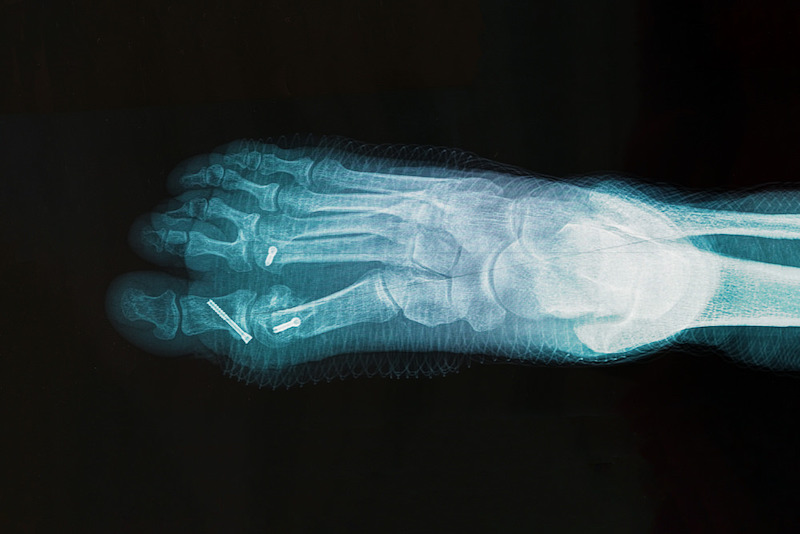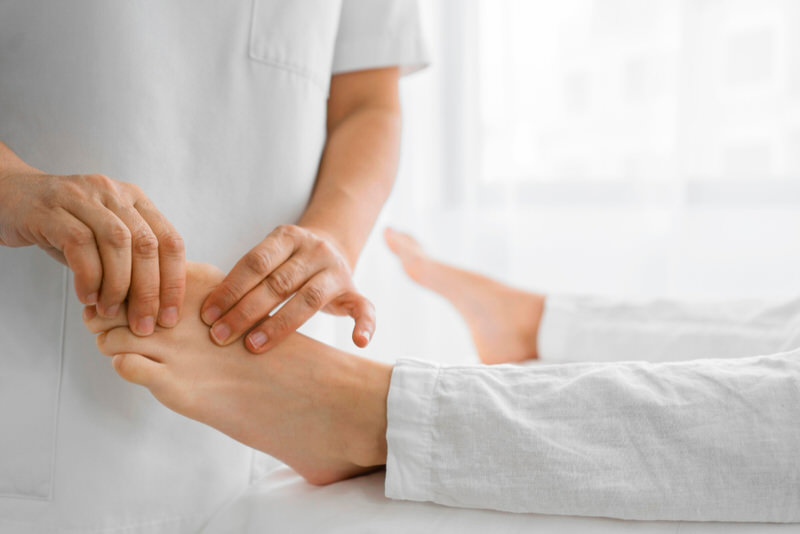A bunion requires surgery once it starts getting in the way of your day-to-day activities and becomes increasingly painful or burdensome to ignore. You can break up post-surgery scar tissues using various tactics like physical therapy, laser therapy, cryotherapy, and even home remedies. Physical therapy treatments like soft tissue mobilization and Myofascial release will prove to be quite effective in improving your joint stiffness and mobility.
The intense pain of inflammation and hyper-sensitivity too can be countered with home remedies like taping, applying silicone gel, and vibrations. Complications are not impossible when it comes to bunion surgeries, mainly due to recurrence of the bunions and other aspects.
If you’ve been injured before, you might have some scars to show for your wounds. Scar tissue is a kind of fibrous tissue automatically formed when your normal tissue is destroyed by either a disease or injury or even by surgery.
This complication is medically defined as ‘Arthrofibrosis,’ which causes a painful restriction in your joint motion and is quite common after bunion surgeries. So, it’s best to be informed about how to break it up and cope with the pain.
What is a bunion, and why is its removal necessary? Can you break up scar tissue with physical therapy? What are ways you can use to break up scar tissues? What kinds of pain and irritation can you expect from scar tissue? Are there home remedies and pain-relieving treatments for scar tissues? Are there complications when carrying out bunion surgeries?
What is bunion removal?
A bunion is a bony bump consisting of both bone and soft tissue that grows at the base of your big toe. This interferes with your toe positions, as your big toe will start leaning on your second toe excessively once bunion forms.
While this may seem not so much of a problem, it does become quite tiresome when you develop severe foot pain every time you walk around. If prescribed medicines have no relieving effect on your bunion, it could lead to inflammation and swelling of your big toe.
Once a bunion reaches this stage, a surgical procedure is recommended to remove it. Then only will you be faced with a new issue of scar tissues.
How can you break up scar tissue with physical therapy?
Physical therapy is well known for its ability to improve conditions like the buildup of scar tissues. When you visit a physical therapist, they will carefully note down your condition and help you out with a personalized approach to therapy.
The following are the most common forms of physical therapy used in breaking up scar tissues.
- Stretching – Gentle stretching of your toes and legs at a slow pace will help in gradually increasing its flexibility.
- Soft tissue mobilization – This is a hands-on technique that will be used by your therapists on your muscles, ligaments, and fascia to gradually improve your muscle function.
- Myofascial release – This is an absolutely safe and very effective hands-on technique in which your therapist will apply light sustained pressure onto your myofascial connective tissue. This not only helps with restoring motion but also helps in eliminating the pain involved with scar tissues.
- Instrument-assisted soft tissue mobilization – This method requires the use of ergonomic instruments and stainless steel which will be used to rub against the area of scar tissues on your toes. If the hands-on technique becomes too difficult, this would be the next best option for you. This has been proven quite useful according to a 2016 study conducted by the US National Library of Medicine.
Other treatments could also include using topicals, injectables, cryotherapy, radiotherapy, and even laser therapy under medical guidance.
What kind of pain can you expect from scar tissues?
When it comes to scar tissues forming after bunion surgery, you can expect itching and burning sensations around your toe. Inflammation or swelling around the area which your bunion existed too is possible.
Most of the complaints were about the tenderness and hypersensitivity of the region around the scar and the overall lack of mobility in the bunion joint area.
Home remedies and pain management methods for scar tissues
Various home remedies and other pain management methods are listed below for you to try out after bunion surgery.
| Home remedies | Pain Management |
| Massage – Massaging for about 10 minutes, 2 times per day, will help decrease the sensitivity. | Corticosteroid injections – These can help improve painful symptoms |
| Taping – Wrapping up your scar tissue area will help reduce the tension | Shockwave therapy – This will increase your blood flow and develop new blood vessels in the affected area to speed up the healing process. |
| Silicone gel – This liquid, once applied, speeds up the scar tissue healing process | Vibration – Using electronic massagers and other vibration devices will numb and reduce the pain. |
| Exercise programs – This will help to decrease your joint stiffness and gradually improve your motion as well. | Surgery – You can always resort to surgery as a last option if none of the other treatments help you out. |
What are the complications involving bunion surgery?
According to Harvard Medical School, studies have proven that 85% to 90% of patients are content with their results. However, a review has also shown that a third of patients have been dissatisfied with their toe alignment improvement.
You need to watch out for after having bunion surgery is its recurrence. This is not so rare, as 16% of patients have complained of such a recurrence. It occurs when the surgeon does not address the underlying deformity, and only the bony bulge is shaved off.
There is a possibility that the cut bone won’t come together at all, which is known often as a ‘nonunion.’ This would need you to undergo yet another surgery to be rid of it.
A 2018 study by the US National Library of Medicine also reveals that this surgery often causes the joint at the base of the big toe to stiffen up, making it all the harder to carry out simple activities like rolling the foot in a smooth heel-to-toe movement.

You can also face complications from the irritation of pins or screws utilized to hold the bone together. This can give rise to uncomfortable stiffness, swelling, and excessive scarring as well. You can expect the swelling and joint stiffness to go down within 3 months. However, if you face the complication of nerve damage, your recovery period might extend.
According to Harvard Medical School studies, you don’t really need to worry about infection since the chances of getting an infection are as low as 1%.
FAQ’s
Is the bunion surgery painful?
It would be false to say that bunion surgeries involve much pain since it’s pretty much like any other normal surgery. Most of the pain and irritation of bunion surgery comes after the operation. However, even this pain is tolerable with the correct kind of medication.
Can scar tissue heal on its own?
The initial scar tissue after a recent surgery can go away without the need for additional surgical procedures. However, this doesn’t mean that you can just wait and watch for it to go away. You can of course try out physical therapy, home remedies, joint and toe exercises to heal your tissue gradually.
Will the surgery leave severe scars?
Scars are quite natural when it comes to any surgery. Small incisions made on the top of the foot or to the side ensure minimum scarring. Of course, this entirely depends on the surgeon operating and his expertise.
Conclusion
While there are several different treatments that you could pick and try out to treat your scar tissue, there is no ‘universally successful’ treatment 100% guaranteed. The psychological effects and movement restrictions imposed by scar tissues need to be communicated to you beforehand by your surgeon or doctor.
Then only can you prepare on setting out realistic goals in healing and overcoming your scar tissues with the various therapy methods that exist.


